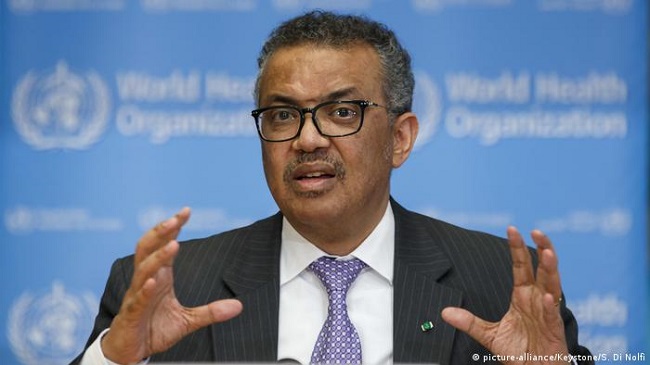– Advertisement –
Suriname on Monday, June 30, 2025, became the first country in the Amazon region to receive malaria-free certification from the World Health Organisation (WHO). This historic milestone follows nearly 70 years of commitment by the government and people of Suriname to eliminate the disease across its vast rainforests and diverse communities.


“WHO congratulates Suriname on this remarkable achievement,” said Dr Tedros Adhanom Ghebreyesus, WHO Director-General. “This certification is a powerful affirmation of the principle that everyone – regardless of nationality, background, or migration status – deserves universal access to malaria diagnosis and treatment. Suriname’s steadfast commitment to health equity serves as an inspiration to all countries striving for a malaria-free future.”
With Monday’s announcement, a total of 46 countries and 1 territory have been certified as malaria-free by WHO, including 12 countries in the Region of the Americas.
“Suriname did what was needed to eliminate malaria—detecting and treating every case quickly, investigating to prevent spread, and engaging communities,” said Dr Jarbas Barbosa, Director of the Pan American Health Organisation (PAHO), WHO’s regional office for the Americas. “This certification reflects years of sustained effort, especially reaching remote areas. It means future generations can grow up free from this potentially deadly disease.”
Certification of malaria elimination is granted by WHO when a country has proven, beyond reasonable doubt, that the chain of indigenous transmission has been interrupted nationwide for at least the previous three consecutive years.
Dr Amar Ramadhin, Minister of Health of Suriname, stated: “Being malaria-free means that our population is no longer at risk from malaria. Furthermore, eliminating malaria will have positive effects on our healthcare sector, boost the economy, and enhance tourism.
“At the same time, we recognize that maintaining this status requires ongoing vigilance. We must continue to take the necessary measures to prevent the reintroduction of malaria. We are proud that our communities are now protected, and we look forward to welcoming more visitors to our beautiful Suriname – while remaining fully committed to safeguarding these hard-won gains.”
Suriname’s road to elimination
Suriname’s malaria control efforts began in 1950s in the country’s densely-populated coastal areas, relying heavily on indoor spraying with the pesticide DDT and antimalarial treatment. By the 1960s, the coastal areas had become malaria-free and attention turned towards the country’s forested interior, home to diverse indigenous and tribal communities.
Although indoor spraying was successful in coastal areas, its impact was limited in the country’s interior due to the prevalence of traditional open-style homes that offer minimal protection against mosquitoes. In 1974 malaria control in the interior was decentralised to Medische Zending, Suriname’s primary health care service, which recruited and trained healthcare workers from the local communities to provide early diagnosis and treatment.
The surge in mining activities, particularly gold mining which often involves travel between malaria-endemic areas, led to increases in malaria, reaching a peak of more than 15,000 cases in 2001, the highest transmission rates of malaria in the Americas.
Since 2005, with support from the Global Fund to Fight AIDS, Tuberculosis and Malaria, the capacity to provide diagnosis was greatly expanded with both improvements in microscopy and the use of rapid diagnostic tests, particularly among mobile groups. Artemisinin-based treatments with primaquine were introduced in Suriname and neighboring countries through PAHO-led studies under the Amazon Malaria Initiative (AMI-RAVREDA), supported by the United States. Prevention among high-risk groups was also strengthened through the distribution of insecticide-treated nets funded by the Global Fund.
By 2006, malaria had drastically decreased among the indigenous populations, prompting Suriname to shift its focus to high-risk mobile populations in remote mining areas. To reach these groups – many of whom were migrants from neighboring endemic countries – the country established a network of Malaria Service Deliverers, recruited directly from the mining communities. These trained and supervised community workers provide free malaria diagnosis, treatment, and prevention services, playing a vital role in closing access gaps in hard-to-reach regions.
Through ensuring universal access to diagnosis and treatment regardless of legal status, deploying an extensive network of community health workers, and implementing nationwide malaria screening, including at border crossings, Suriname successfully eliminated malaria. The last locally transmitted case of Plasmodium falciparum malaria was recorded in 2018, followed by the final Plasmodium vivax case in 2021.
Sustained leadership commitment and funding
The government of Suriname has shown strong commitment to malaria elimination, including through the National Malaria Elimination Taskforce, Malaria Program, Malaria Elimination Fund, and cross-border collaboration with Brazil, Guyana and French Guiana. For many years PAHO/WHO, with the support of the U.S. Government, has provided technical cooperation throughout Suriname’s anti-malaria campaign. Since 2016 Suriname also participated in the “Elimination 2025” initiative – a group of countries identified by WHO as having the potential to eliminate malaria by 2025.
This success in Suriname is a demonstration that malaria elimination is possible in challenging contexts in the Amazon basin and in tropical continental countries. The country’s malaria-free certification plays a critical role in advancing PAHO’s Disease Elimination Initiative which aims to eliminate more than 30 communicable diseases, including malaria, in countries of the Americas by 2030.










